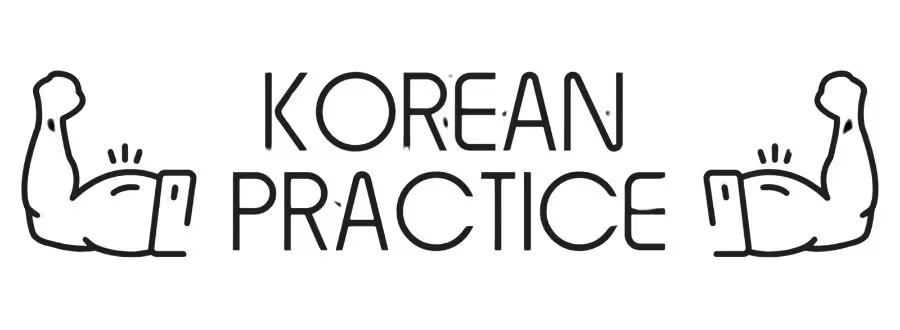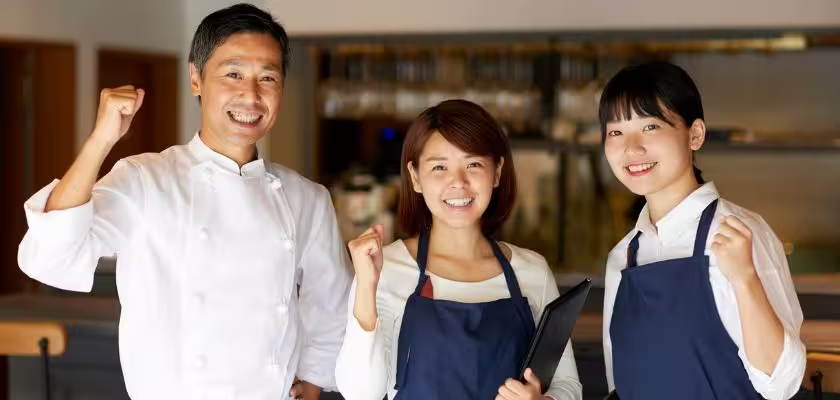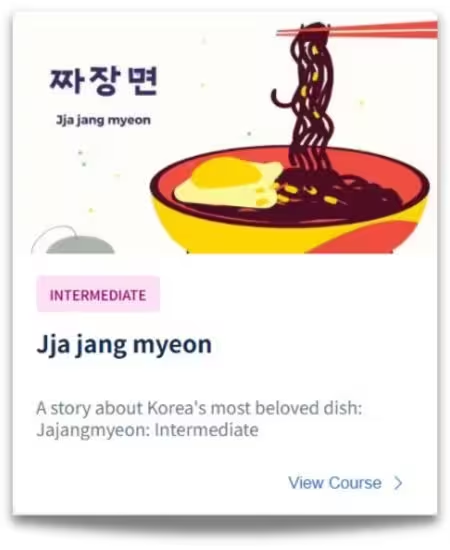Table of Contents
I recognize the value of clear communication in the restaurant setting, which is why I’ve created a complete guide of Korean phrases for restaurants. In this guide, I’ll cover everything from basic greetings to ordering food and making small talk. With these restaurant Korean phrasess, you’ll be able to communicate more effectively with Korean-speaking customers and staff.
Basic Greetings
The first step in any interaction is a proper greeting. Here are some common Korean phrases for restaurants that you can use when greeting customers or staff:
- 안녕하세요 (annyeonghaseyo) – This is a formal greeting that can be used in any situation. It’s equivalent to the English “hello” or “good day.” You can use it when greeting someone for the first time or in a professional setting.
- 안녕 (annyeong) – This is a more casual way of saying “hello.” You can use it with friends or people you’re familiar with.
Example
Original Korean Sentence
안녕하세요?
Pronunciation Guide
안녕하세요 (an-nyeong-ha-se-yo)?
Meaning and Context
안녕하 (to be well) 세요 (I’m asking you politely)?
English Translation
Hello
Literal Translation
(Are you) well?
- 만나서 반갑습니다 (mannaseo bangapseumnida) – This phrase means “nice to meet you” in a formal context. It’s used when meeting someone for the first time or in a professional setting.
Example
Original Korean Sentence
만나서 반갑습니다.
Pronunciation Guide
만나서 (man-na-seo) 반갑습니다 (ban-gap-seum-ni-da).
Meaning and Context
만나 (to meet) 아서 (because) 반갑 (to be glad) 습니다 (am; I’m telling you in a polite and formal manner).
Pronunciation Patterns for Conjugations
⊳ 만나 + 아서 = 만나서
When rapidly pronounced, ‘나’ and ‘아’ naturally combine to form ‘나’
English Translation
Nice to meet you.
Literal Translation
(I)’m glad because (I) meet (you).

Want to learn Korean in a simple and structured way, just like this? My courses break down grammar step by step, making Korean easy to understand. Plus, you can try free sample lessons. Ready to start?
- 만나서 반가워요 (mannaseo bangawoyo) – This is a more informal way of saying “nice to meet you.” It’s appropriate for casual situations, such as meeting friends or acquaintances.
Example
Original Korean Sentence
만나서 반가워요.
Pronunciation Guide
만나서 (man-na-seo) 반가워요 (ban-ga-wo-yo).
Meaning and Context
만나 (to meet) 아서 (because) 반갑 (to be glad) 어요 (am; I’m telling you polite and friendly).
Pronunciation Patterns for Conjugations
⊳ 만나 + 아서 = 만나서
When rapidly pronounced, ‘나’ and ‘아’ naturally combine to form ‘나’
⊳ 반갑 + 어요 = 반가워요
When rapidly pronounced, ‘갑’ and ‘어’ naturally combine to form ‘가워’ irregularly
English Translation
Nice to meet you.
Literal Translation
(I)’m glad because (I) meet (you).
Example
- 어서 오세요 (eoseo oseyo) – This is a common greeting used to welcome someone to a place, such as a store or restaurant. When entering a Korean restaurant, you’ll often hear this! Thinking about Korean Phrases for Restaurants, this is one of the first you should know. It’s equivalent to ‘welcome’ in English.
Original Korean Sentence
어서 오세요
Pronunciation Guide
어서 (eo-seo) 오세요 (o-se-yo)
Meaning and Context
어서 (quickly) 오 (to come) 세요 (please)
English Translation
Welcome.
Literal Translation
Please come quickly.
When learning Korean phrases for restaurants, it’s important to understand the cultural nuances behind the language. In Korean culture, age and social status play a significant role in how people address each other.
For example, older people are typically addressed with more respect, using formal language and honorifics. This is especially important to keep in mind when interacting with customers who may be older or hold a higher social status. Knowing the proper Korean phrases for restaurants for showing respect can go a long way in building positive relationships and providing excellent customer service in a Korean restaurant setting.
Korean Phrases for Restaurants when Ordering Food
Of course, the main reason for visiting a Korean restaurant is to enjoy delicious food. When learning Korean phrases for restaurants, it’s essential to know how to order food in Korean. Here are some common phrases that can help you order food in a Korean restaurant and enjoy the dining experience:

- 주문할게요 (jumunhalkkeyo) – I would like to order. If you want to I would like to order in Korean, simply say “Jumunhalkkeyo” and follow it up by stating the menu items you would like to order.
Example
Original Korean Sentence
주문할게요.
Pronunciation Guide
주문할게요 (ju-mun-hal-kke-yo).
Meaning and Context
주문하 (to order) ㄹ게 (I will) 요 (I’m telling you polite and friendly).
Pronunciation Patterns for Conjugations
⊳ 주문하 + ㄹ게 = 주문할게
When rapidly pronounced, ‘하’ and ‘ㄹ’ naturally combine to form ‘할’
English Translation
I would like to order.
Literal Translation
I will order.
- 이거 주세요 (igeo juseyo) – “Please give me this.” You can use this phrase to point to a menu item or to refer to it by name.
Example
Original Korean Sentence
이거 주세요.
Pronunciation Guide
이거 (i-geo) 주세요 (ju-se-yo).
Meaning and Context
이거 (this; colloquial style of 이것) 주 (to give) 세요 (please).
English Translation
Please give me this.
Literal Translation
Please give this.
- 매운 거 싫어요 (maeun geo sileoyo) – “I don’t like spicy food.” Use this phrase to let the server know that you don’t want your food to be too spicy.
Example
Original Korean Sentence
매운 거 싫어요.
Pronunciation Guide
매운 (mae-un) 거 (geo) 싫어요 (si-leo-yo).
Meaning and Context
매운 (spicy) 거 (thing; colloquial style of 것) 싫 (don’t like) 어요 (I’m telling you polite and friendly).
English Translation
I don’t like spicy food.
Literal Translation
(I) don’t like spicy thing.
- Mastering key Korean phrases for restaurants like ‘더 주세요’ (deo juseyo), meaning ‘Please give me more,’ is incredibly helpful. Use this phrase when you want more of a particular dish or if you need something else, such as a refill of your drink.
Example
Original Korean Sentence
더 주세요.
Pronunciation Guide
더 (deo) 주세요 (ju-se-yo).
Meaning and Context
더 (more) 주 (to give) 세요 (please).
English Translation
Please give me more.
Literal Translation
Please give more.
- 추천 메뉴가 뭐예요? (chucheon menyuga mwoyeyo) – ‘What do you recommend?’ or ‘What is the recommended menu?’ Use this phrase, a key part of Korean Phrases for Restaurants, when you want the server’s recommendation on what to order. This is a great way to try new dishes and experience the local cuisine.
Example
Original Korean Sentence
추천 메뉴가 뭐예요?
Pronunciation Guide
추천 (chu-cheon) 메뉴가 (me-nyu-ga) 뭐예요 (mwo-ye-yo)?
Meaning and Context
추천 (recommendation) 메뉴 (menu) 가 (my subject is the recommended menu) 뭐 (what) 예요 (is; I’m asking you polite and friendly)?
English Translation
What is the recommended menu?
Literal Translation
What is recommendation menu?
- 얼마예요? (eolmayeyo?) – “How much is it?” Use this phrase when you want to know the price of a dish or menu item.
Example
Original Korean Sentence
얼마예요?
Pronunciation Guide
얼마예요 (eol-ma-ye-yo)?
Meaning and Context
얼마 (how much) 예요 (is; I’m asking you polite and friendly)?
English Translation
How much is it?
Literal Translation
How much is (it)?
- 매운 맛 좀 덜어 주세요 (maeun mat jom deoreojuseyo) – “Please make it less spicy.” Use this phrase if a dish is too spicy for you and you want the chef to adjust the level of spiciness.
Example
Original Korean Sentence
매운 맛 좀 덜어주세요.
Pronunciation Guide
매운 (mae-un) 맛 (mat) 좀 (jom) 덜어 주세요 (deo-reo-ju-se-yo).
Meaning and Context
매운 (spicy) 맛 (taste) 좀 (kindly) 덜 (to reduce) 어 주세요 (please).
English Translation
Please make it less spicy.
Literal Translation
Please reduce spicy taste.
- 물 좀 주세요 (mul jom juseyo) – “Please give me water.” Use this phrase when you want a glass of water.
Example
Original Korean Sentence
물 좀 주세요.
Pronunciation Guide
물 (mul) 좀 (jom) 주세요 (ju-se-yo).
Meaning and Context
물 (water) 좀 (kindly) 주 (to give) 세요 (please).
English Translation
Please give me water.
Literal Translation
Please give water.
- 계산할게요 (gyesanhalggeyo) – “I would like to pay.” Use this phrase when you are ready to pay the bill.
Example
Original Korean Sentence
계산할게요.
Pronunciation Guide
계산할게요 (gye-san-hal-gge-yo).
Meaning and Context
계산하 (to calculate) ㄹ게 (I will) 요 (I’m telling you polite and friendly).
Pronunciation Patterns for Conjugations
⊳ 계산하 + ㄹ게 = 계산할게
When rapidly pronounced, ‘하’ and ‘ㄹ’ naturally combine to form ‘할’
English Translation
I would like to pay.
Literal Translation
I will calculate (and pay for it).
- 시간이 얼마나 걸려요? (sigani eolmana geollyeoyo?) – “How long does it take?” Use this phrase when you want to know how long it will take for your order to be prepared.
Example
Original Korean Sentence
시간이 얼마나 걸려요?
Pronunciation Guide
시간이 (si-ga-ni) 얼마나 (eol-ma-na) 걸려요 (geol-lyeo-yo)?
Meaning and Context
시간 (time) 이 (my subject is time) 얼마나 (how long) 걸리 (to take) 어요 (I’m asking you polite and friendly)?
Pronunciation Patterns for Conjugations
⊳ 걸리 + 어요 = 걸려요
When rapidly pronounced, ‘리’ and ‘어’ naturally combine to form ‘려’
English Translation
How long does it take?
Literal Translation
How long does time take?
When ordering food in a Korean restaurant, it’s important to keep in mind the cultural etiquette and use proper Korean phrases for restaurants. Remember to be polite and respectful when addressing the server or chef, and try to use honorific language when appropriate. This will help you make a good impression and have an enjoyable dining experience. Using polite Korean phrases for restaurants, such as “주세요 (ju-se-yo)” which means “please,” can also make the ordering process smoother and show your appreciation for the food and service.
Making Small Talk
In addition to ordering food and using proper Korean phrases for restaurants, making small talk can help create a more comfortable and welcoming atmosphere in the restaurant. Here are some common Korean phrases for making small talk that you can use with customers or staffs:
- 오늘 날씨가 좋네요 (oneul nalssiga joneyo) – The weather is nice today
Example
Original Korean Sentence
오늘 날씨가 좋네요.
Pronunciation Guide
오늘 (o-neul) 날씨가 (nal-ssi-ga) 좋네요 (jon-ne-yo).
Meaning and Context
오늘 (today) 날씨 (weather) 가 (my subject is the weather) 좋 (to be nice) 네 (I’m sharing my feelings with you) 요 (I’m telling you polite and friendly).
English Translation
The weather is nice today.
Literal Translation
Weather is nice today.
- 어디서 왔어요? (eodiseo wasseoyo) – Where are you from?
Example
Original Korean Sentence
어디서 왔어요?
Pronunciation Guide
어디서 (eo-di-seo) 왔어요 (wa-sseo-yo)?
Meaning and Context
어디 (where) 서 (from) 오 (to come) 았 (past tense) 어요 (I’m asking you polite and friendly)?
Pronunciation Patterns for Conjugations
⊳ 오 + 았 = 왔
When rapidly pronounced, ‘오’ and ‘았’ naturally combine to form ‘왔’.
English Translation
Where are you from?
Literal Translation
Where (did you) come from?
- 한국 음식이 어때요? (hanguk eumsigi eoddaeyo) – How do you like Korean food?
Example
Original Korean Sentence
한국 음식이 어때요?
Pronunciation Guide
한국 (han-guk) 음식이 (eum-si-gi) 어때요 (eo-ddae-yo)?
Meaning and Context
한국 (Korea) 음식 (food) 이 (my subject is Korean food) 어때 (what do you think) 요 (I’m asking you polite and friendly)?
English Translation
How do you like Korean food?
Literal Translation
What do you think Korea food?
Using small talk and Korean phrases for restaurants can help you engage in conversation with Korean-speaking customers and make them feel more welcome.
Conclusion: Mastering Korean Phrases for Restaurants
I believe that effective communication is key to providing a memorable dining experience. I hope that this guide to Korean phrases for restaurants will help you better communicate with Korean-speaking customers and staff. By using these Korean phrases for restaurants, you can show your appreciation for their culture and make them feel more welcome in restaurant.
Remember, learning a few Korean phrases for restaurants is a small but important step towards creating a more welcoming and inclusive atmosphere. I encourage you to practice these Korean phrases for restaurants and continue learning more to enhance your communication skills and provide exceptional service.
Sign up for my newsletter and get
📖 Korean short stories
🎧 Listening practice with audio
❓ Vocabulary and grammar quizzes
🎁 Free courses
📝 Blog updates
– all delivered straight to your inbox!










